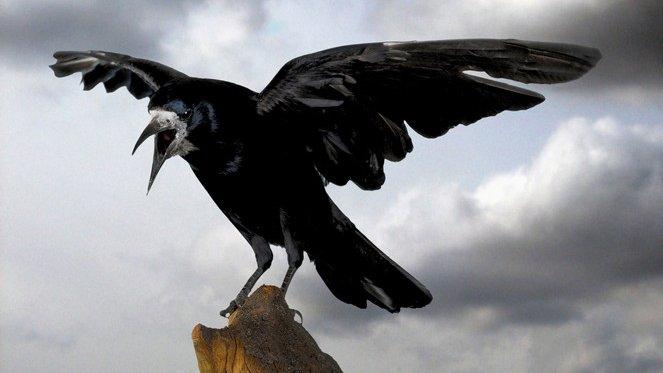Wild New Caledonian crows possess tool-craft talent
- Published
Crows from the Pacific island of New Caledonia show amazing abilities to create tools (Footage: University of St Andrews)
Scientists have confirmed that a species of wild crow from New Caledonia in the South Pacific can craft tools.
The birds were observed bending twigs into hooks to extract food hidden in wooden logs.
Previously this skill had been seen in captive birds kept in laboratories.
The study, external, published in the journal Open Science, suggests that this talent is part of the birds' natural behaviour.
Brainy Betty
In 2002, a captive New Caledonian crow - called Betty - astonished scientists, external.
Researchers at the University of Oxford, external presented her with an out-of-reach bucket of food.
To retrieve it, she bent a piece of wire into a hook - the first time such tool-making skills had been seen in the animal world.
Betty died in 2005, but over the years, the experiment was successfully repeated with other captive birds - including rooks, which have not been seen to use tools in the wild.
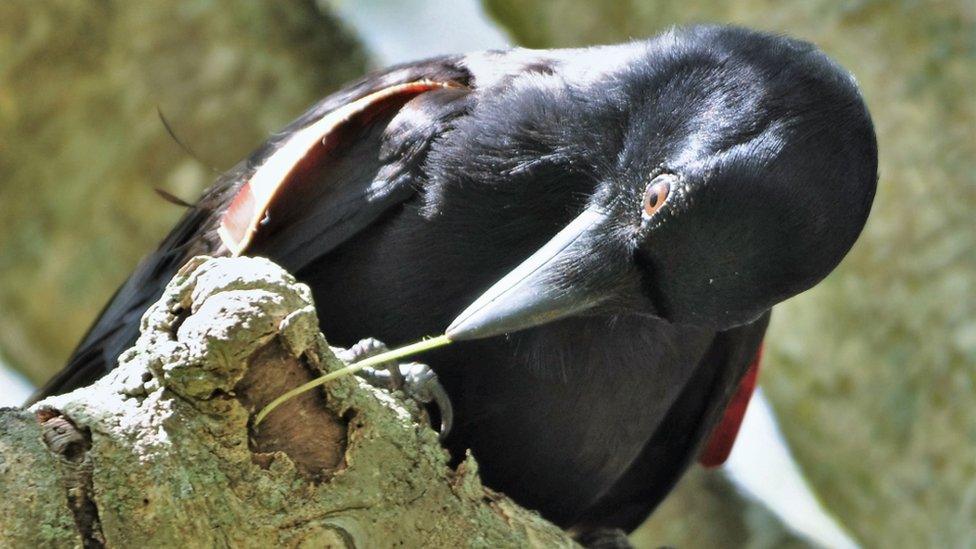
Stick tool skills have now been recorded in crows in the wild
Lead author Dr Christian Rutz, from the University of St Andrews, external in Scotland, said: "It seemed as if this was something that the birds spontaneously invented in the lab."
While it has long been known that wild New Caledonian crows use twigs to extract grubs from wooden logs, the researchers say there is now enough evidence to confirm that they also bend them into hooks just like their captive counterparts.
In a series of experiments, the researchers captured crows from the tropical forests of New Caledonia, and placed them for short periods of time in make-shift aviaries.
Dr Rutz said: "This means we can test them under highly controlled experimental conditions - but the kind of experiments we do there, they don't look at how smart these animals are, they ask what sort of tool behaviour they express naturally."
Hooks in the wild
The crows were presented with a wooden log, which had some tasty snacks tucked into holes in the surface.
"The only other thing we provided in the aviary was the plant material, which we knew they naturally used for tool-making in the wild," explained Dr Rutz.
"So the task was very simple, we asked our subjects to make tools, then use these tools to extract the hidden food."
The crows did not need to fashion hooks to retrieve the treats, but 10 of the 18 wild-caught birds did so.
The researchers observed them snapping thin branches off of the shrubs, holding the twigs down with a foot, then bending the end into a hook - just as Betty had done with the wire.
During further field research, the scientists also saw the birds manufacturing hook-shaped contraptions outside of the aviaries - confirming that this was part of the crows' natural behaviour.
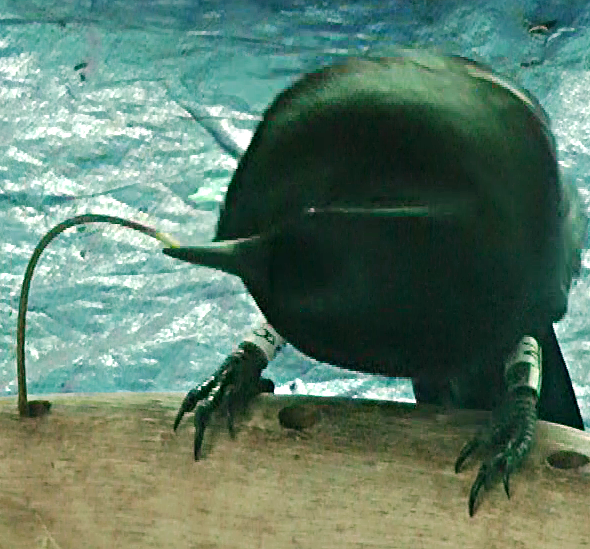
When tested, 10 of 19 wild-caught birds fashioned hooks to retrieve food
The researchers say they believe that the New Caledonian crows are fashioning twigs into hooks to improve the performance of the tools.
"We think the bending helps with the tool ergonomics," said Dr Rutz.
"It helps them to position their tools in their bill, and centre the tip of the tool - the functional end they insert into holes and crevices - to centre that in their field of binocular vision."
He said the finding that wild New Caledonian crows had this ability shouldn't detract from Betty's original performance.
"But", he added, "it raises the possibility that she just expressed natural behaviour rather than assessing the task and then coming up with a clever solution."
The researchers now want to find out how tool-use comes about - to see if it is innate or learned as younger birds watch the older generation. The team also want to know whether other species of birds use tools to see whether this behaviour is rare or widespread.
Prof Alex Kacelnik, from the University of Oxford, who carried out the original experiments with Betty, told BBC News: "I'm delighted to see that the findings made one and a half decades ago in the lab are now corroborated by work in the field."
"It would be surprising if an ability displayed by captive animals were not within the range of what wild animals can do."
He added that Betty used a number of different methods to bend wires into hooks, and could also unbend them when required - behaviour not yet seen in the wild.
"We never claimed that Betty was a freak with exceptional intelligence, and as they correctly say, this is evidence neither for or against an exceptional cognitive capacity in the animals."
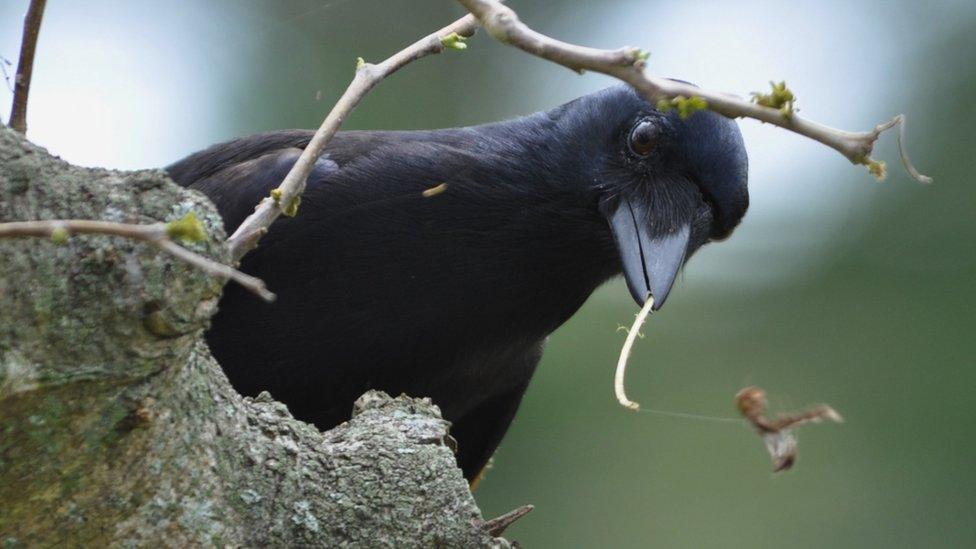
A wild New Caledonian crow extracting prey with a curved stick tool
Also commenting on the research, Dr Nathan Emery, from Queen Mary University of London, external and author of Bird Brain: An exploration of avian intelligence, said it was an interesting study but added that Betty still deserved some credit.
"Despite the fact that New Caledonian crows naturally bend pliable yet strong material into hooks, there still remains the significant finding that Betty solved a novel problem using an innovative solution with a novel material," he said.
"I think it wouldn't be wise (or fair) to completely dismiss Betty's ability to solve a novel problem using a novel material, even if the means of making a hook were part of her biology."
Follow Rebecca on Twitter @BBCMorelle, external
- Published23 December 2015
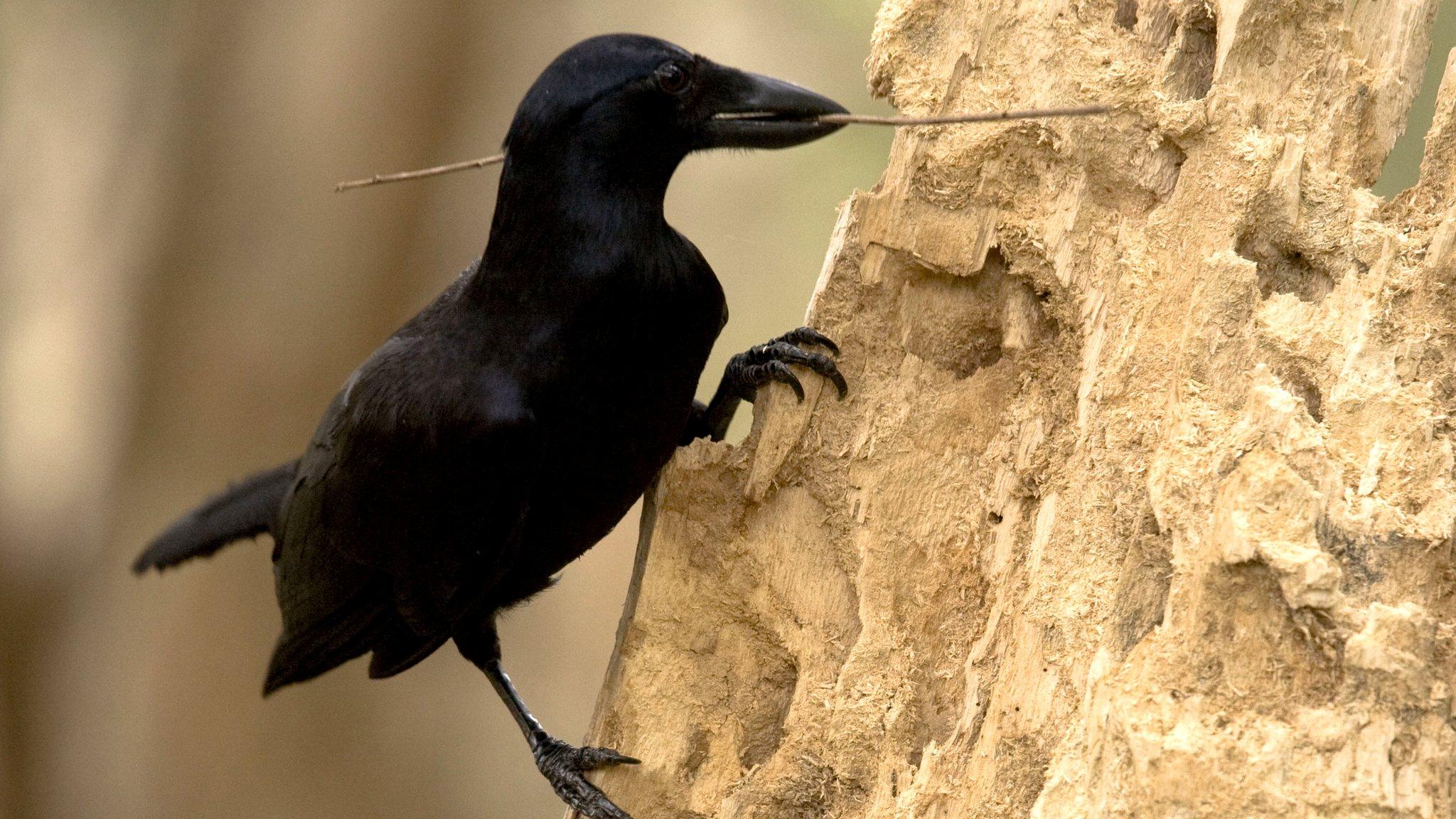
- Published3 September 2014
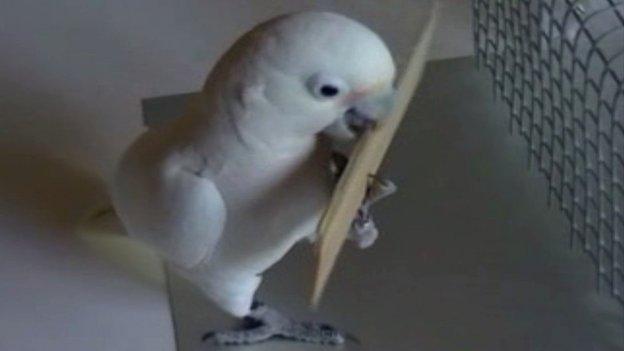
- Published1 July 2014
